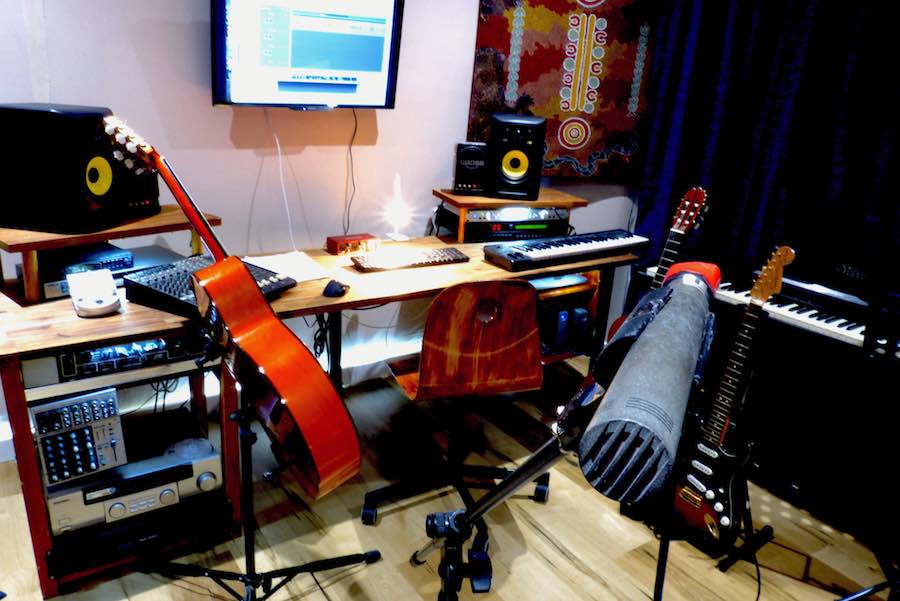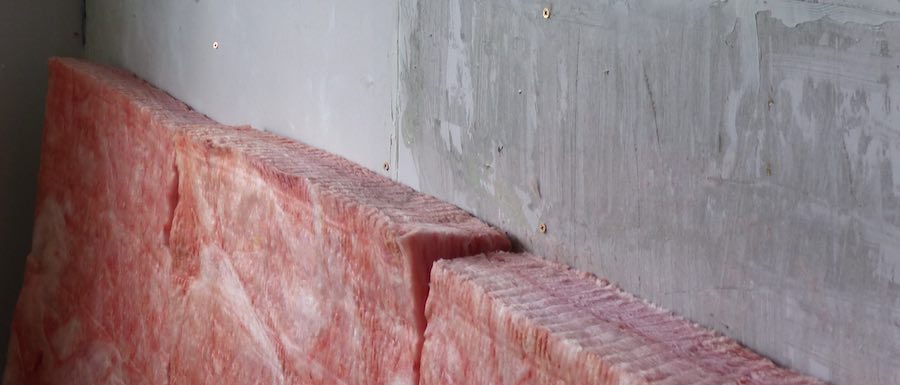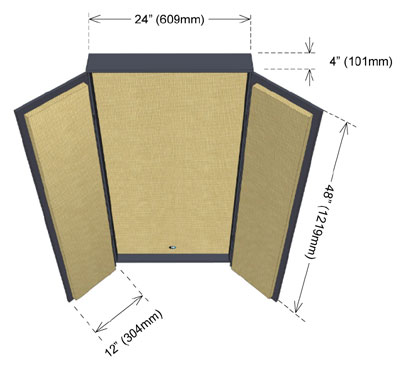My Recording Studio Construction
Record and Recreate
A Recording Studio, near you, engineered to help bring out the best acoustic sound on all guitars.
I have designed my new recording studio, so as to have at my disposal, the ultimate and most versatile recording tools and environment. Thus to allow me to pursue all my creative needs with no limitations.
The Room sound in tracking, mixing and overdub sessions
As a session guitarist, I have always missed been able to have unique room sounds at my disposal, so as to add depth and natural reverb and reflections to my guitar sounds.
Also, some studio rooms, I have worked in, were not able to capture the overall spectrum of the guitar, due to a poor tonal balance, as a consequence of inadequate engineering and choice of reflecting material on walls and ceilings.
Also, most music does have its fundamental frequencies in the relative low register, and regular studio rooms, with insufficient low end absorption, will artificially amplify specific bass notes of the guitar, therefore creating an uncomfortable listening and recording experience,
As a consequence I have new designed a recording room that will give me what I have always needed; Natural extra tonal value to my existing sound: amplified or non amplified guitar sound.
My New Guitar Engineered Recording Studio
 I have now created a room that allows me to have a choice from different reflecting surfaces : wood, glass, or high frequency absorption 24 kg m3 fibre glass. I can now select the most adequate tonal quality of my room sound and enhanced harmonic reflections.
I have now created a room that allows me to have a choice from different reflecting surfaces : wood, glass, or high frequency absorption 24 kg m3 fibre glass. I can now select the most adequate tonal quality of my room sound and enhanced harmonic reflections.
I have also designed a room that eliminates standing low frequencies waves. These waves , if present may colour artificially the final guitar sound , and as a consequence the listener will hear with less or more clarity, specific notes or chords .
I am now able, when I record acoustic guitars, to place only one mic, at the desired distance from the guitar and achieve the studio quality final sound, already mixed with my unique choice of room sound.
Furthermore, I am also able to use the flexible room sound, to create unique sounds on saturated and distorted guitar sounds, at all volumes: If I need to crank up the amp, to get the desired tone, the bass will not boom and feedback is reduced.
How did I achieve such?
All rooms have standing waves that are consequence of low frequencies, bouncing around the walls, therefore adding energy to themselves and resulting in booming sounds.
A major concern with a booming low frequency is that all octaves of that frequency will also be enhanced, in a possible non desired manner. These frequencies can easily be musical notes. As as result, we may have an A chord that sounds much louder than a Bb chord. This can be very disturbing when you are playing, mixing and overdubbing,
Guitars notes start at around 100 hz and go up 800 hz maximum. There fore, when we started engineering my studio, I had to look for material material with high absorption capabilities especially in the 100 hz.
Feeling good when I am recording
I spend many hours in recording studios, and I have always needed an acoustic pleasant room sound, that would not tire me out at the end of the day. My new recording studio now helps me feel just great when I play. It does not matter if I perform at low or high volumes, I now know that what I am hearing in the room, is what is going down, and is what the listener will hear and feel in their listening experience.
Music Production Menu
Beware
Whenever you buy materials classified commercially as sound absorption, you must be aware of how much and of what frequencies the absorb. There is no need to buy expensive material. So, just choose the most adequate for your sound objectives.
Bass Absorption
All acoustically absorptive devices, function by turning sound energy into heat through friction.
My choice of sound absorption material, for my recording studio. was that of 24 kg m3, fibreglass( glass-wool ), with 10 cm thickness, placed on the surface of the front and back walls of the recording studio. This material has an 0.80 absorption coefficient at 100 hz, in comparison to more expensive materials, like acoustic blankets with only 0.04 absorption coefficient.
 I also used this material in corners, to create bass traps. These bass traps are separated from the walls at around 15 cms.
I also used this material in corners, to create bass traps. These bass traps are separated from the walls at around 15 cms.
And to finish off, I assembled a Resonating bass trap called a Panel absorber, tuned at 120 hz, the A bass note.
For its construction, I used a plywood sheet 4’— 8′ panel mounted on a 1’— 4′ frame with a thickness of 1/4″ plywood. This panel, because of its specific size and density, will now resonate , vibrate, in sympathy with my unwanted bass note, at around 110 Hz.
In order to help it resonate

more, I mounted the panel with a gap ,so as to allow it to vibrate freely. On the inside of the frame, I added fibre glass to help absorb and turn into heat this specific frequency.
You may find a comparison between sound absorption materials and how they absorb frequencies in relation to wall distance in the following chart. You will be surprised of how expensive materials will actually do less for you, than cheaper materials as fibreglass.
 Echoes
Echoes
In a recording studio, a created sound will reflect on walls and bounce back to its origin, where it will arrive later in time. This principle is what we call an echo of the sound: a repetition of the sound.
All small rooms will reflect and produce some sort of echo. The smaller the room, the quicker the repetition. Thus the shorter the echo,
In smaller rooms we will have very quick repetitions of the original sound. In my recording studio, I did not want to eliminate them, but control them in relation to the positioning of the microphone.
For such I engineered movable walls to eliminate parallel walls, which increment bouncing or repetition of the wave, at the reference point of the microphone.
In other words, when I mic the guitar, if I want a fluttering sound, I can enhance the character of parallel walls, and if I do not want this quality, I can now place movable panels to reduce direct reflections from parallel walls.
These small quick echoes can be desirable or not. I can now choose to use them so as to colour my sound to my personal satisfaction, emulating the live concert feel.
The Acoustic Sound Recording Studio
Electric guitars do not sound great without reverb and added room sounds. Acoustic guitars sound better when the room can reinforce the character of the instrument.
I am also a true believer of minimum micking and achieving unique sound in our playing.
The sound is created by the the musician and and then enhanced by instrument, the amplifier , the speaker. The room adds the final touch to the overall sound.
In most studio settings we tend to mic guitars and amps at a close distance but in a balanced room I now have the possibly of miking closer and further away, to have a unique room sound to add to the final mix.
The rule of thumb in micing is to place the microphone in the spot where the overall sound of the instrument can be heard. You really only need one mic for any guitar but I sometimes use another mic to capture the room sound. In order to avoid phase cancelation the other mic must be placed at the minimum of three times the distance, from the guitar, as that of the first mic.
For example: If the first mic is at 30 cm. The second mic will have to-be placed at a minimum of 90 cm to avoid the unwanted flanger sound or phase cancellations.
Mesa Boogie / Vox amplifiers
Electric guitars tend to sound pretty bad without an amplifier adding harmonics to the original sound. I always record with valve guitar amplifiers to add the warmth, the distortion, the electric guitars do not generate on their own.
In terms of distortion or saturation, I have two-options and sound to choose from:
 •My fat Mesa Boogies amp sound with a Mesa Boogie 50/50 amplifier of 4 valves and a Studio Pre amp with another 4.
•My fat Mesa Boogies amp sound with a Mesa Boogie 50/50 amplifier of 4 valves and a Studio Pre amp with another 4.
•Or the thinner saturation and distortion of the Vox amplifiers.
I always output the amplified sound to a pair a Mesa Boogie Cabinets feeding Celestion speakers built in 1992 . The result is that of fat at tone thats serves well for both lyrical and rhythmic scenarios.
I can also as previously mentioned, add the room sound to the final mix which will produce an extremely unique character.
My personal choice of electric guitars is that of my handcrafted 1989 Paul Reed Smith, with single and coils and Humbucker pickups, my SRV Fender Stevie Ray Vaughan Stratocaster, or my 1982 Ibanez AS 200 with modified 1987 EMG pickups, and EXG tone controls.
These instruments are also available for all my guitar students to experiment with at my guitar lessons at the Melbourne Creative Guitar School.
 Microphones
Microphones
When I am ready to choose the type of microphone, I will use in my session, I ask myself the following question: Do I want the sound I am hearing in the room or do I want to alter it ?
Condenser microphones will capture what you hear in the room and dynamic microphones will colour and alter the sound. I there fore choose generally condenser mics for acoustic , Spanish flamenco guitars and dynamic mics for electric guitars.
In my Recording Studio I use Schoebs and Neumann TLM 103 condenser mics, and the following dynamic microphones:
- Shure 57, 58
- Electrovoice RE20
- Sennheiser MD421 II
Each microphone produces a distinct sound that I am acquainted with, and there for can choose with ease.


